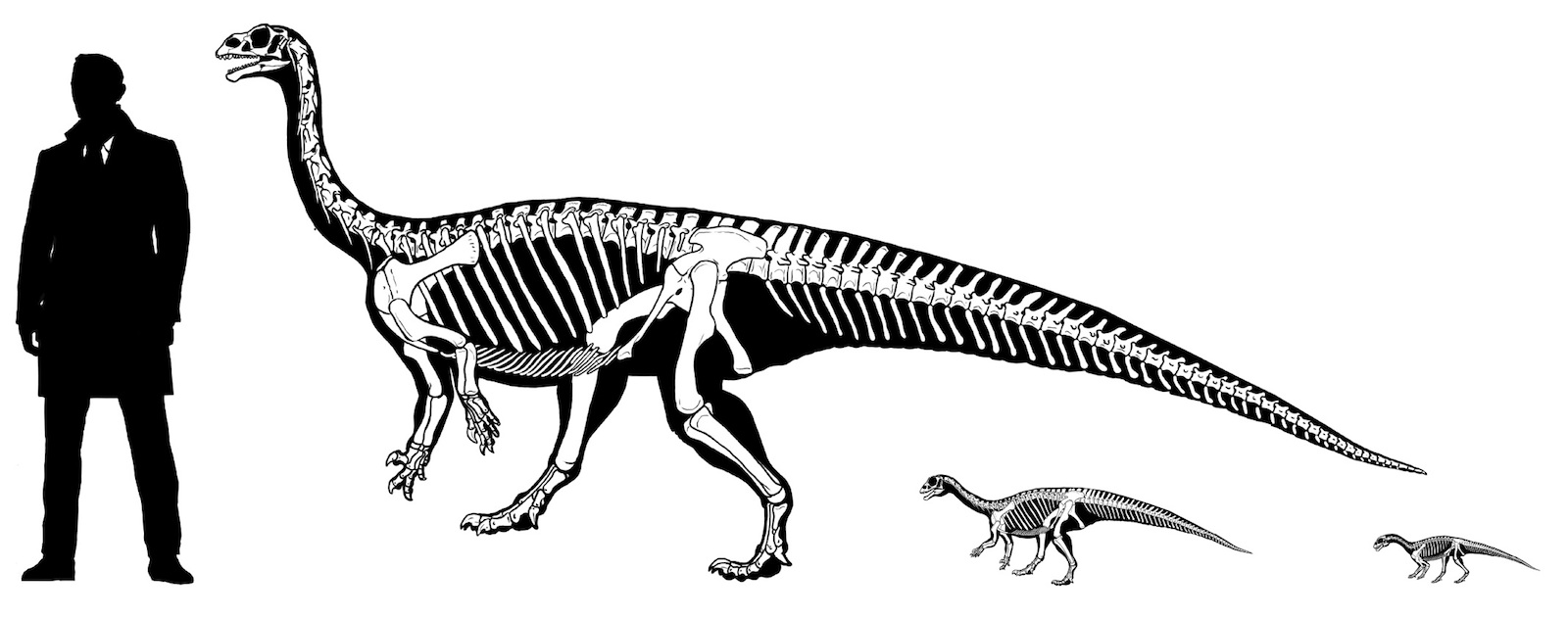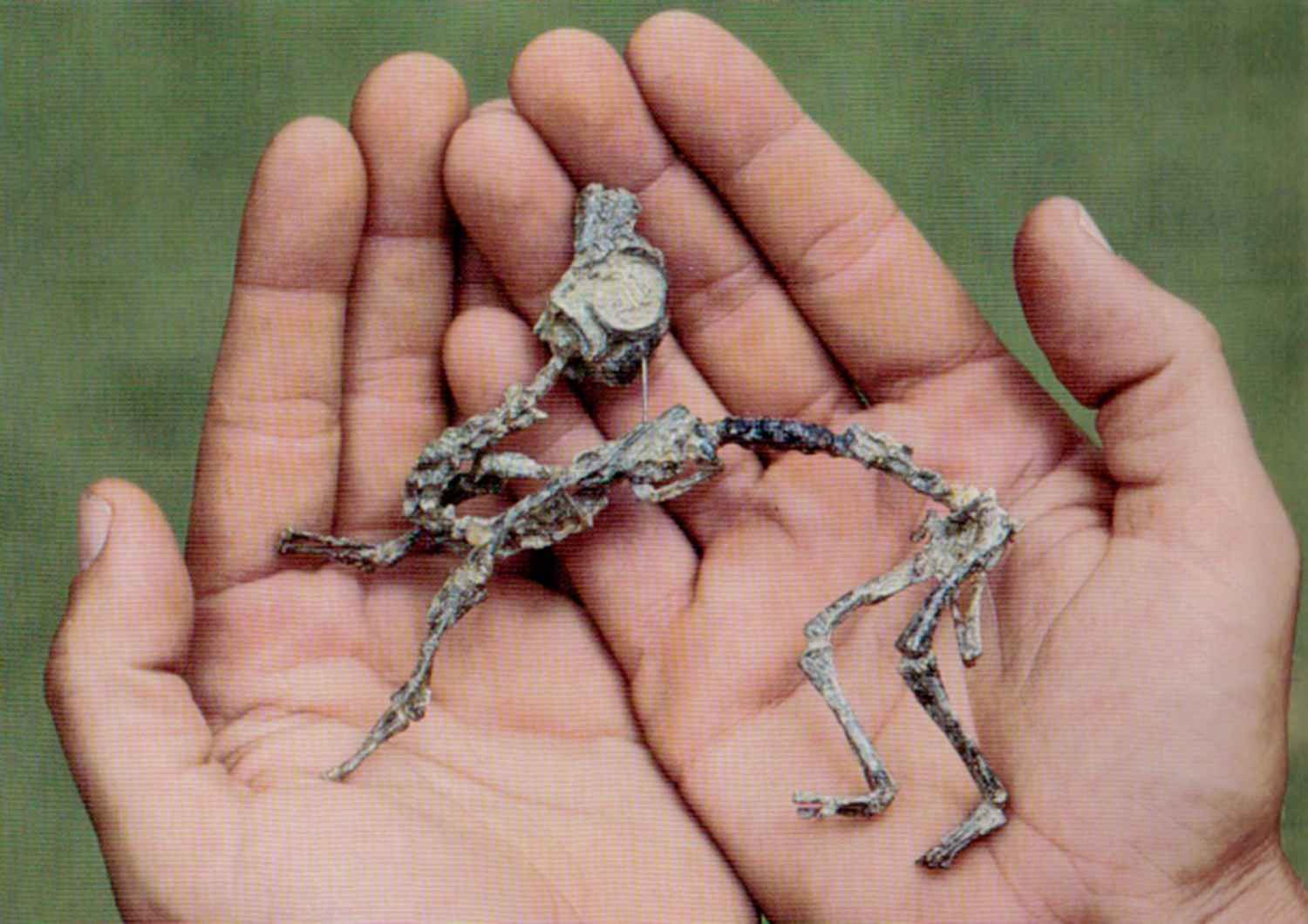No, That Baby Dinosaur Didn't Crawl. But It Did Walk on 4 Legs As an Infant.
A Jurassic-age dinosaur walked on all four legs as a baby, but graduated to a two-legged stance as an adult.
The quadrupedal to bipedal switch made by this sauropodomorph — a type of herbivorous, long-necked and long-tailed dinosaur — appears to be unique among the animal kingdom.
"We cannot find any living animals, besides humans, that do a transition like this at all," said study co-lead researcher Andrew Cuff, a post-doctoral researcher in biomechanics at the Royal Veterinary College (RVC) in the United Kingdom. [Photos: See the Armored Dinosaur Named for Zuul from 'Ghostbusters']
Researchers solved this leggy mystery thanks to six well-preserved specimens of this dinosaur, known as Mussaurus patagonicus, that spanned from infancy to adulthood.
During its lifetime, about 200 million years ago, M. patagonicus lived in what is now Patagonia, in southern Argentina. Although the dinosaur weighed more than a ton as an adult, the sauropodomorph was teeny as a babe — its skeletal remains can fit in a human's palms.
Curious about how this critter moved, scientists from Argentina's Museo de La Plata, the National Scientific and Technical Research Council in Argentina (CONICET), and RVC teamed up to create 3D digital scans of the dinosaur's anatomy at different life stages.
Then, the researchers figured out the dinosaur's mass by calculating the likely weight of its muscles and soft tissues. This data helped them to determine the creature's center of mass at each age — that is, as a newly-hatched dinosaur, a 1-year-old juvenile, and an 8-year-old adult.
Get the world’s most fascinating discoveries delivered straight to your inbox.
M. patagonicus, the researchers found, likely walked on all fours as a baby because its center of mass (also known as its balancing point) was so far forward. If it had only walked on its two hind legs, the dinosaur would have face-planted.
"If you can't get your foot underneath your center of mass, you're going to fall over," Cuff said. "And so, it has to be compensating in a different way. Instead of just relying on its hind legs, it had to be using its forelegs to help support its mass."
However, this dinosaur did not crawl as a baby, as some headlines have suggested. "All of this stuff that you might see about it crawling is incorrect," Cuff said. "It's definitely walking around on four legs rather than crawling, like a human baby might do."
Shortly after the dinosaur's first birthday, its center of mass shifted back toward its hips. So, it likely began walking on its two hind legs at this point, Cuff said. This center-of-mass shift was largely driven by the growth of the creature's tail as it grew older, said study co-lead researcher Alejandro Otero, a vertebrate paleontologist at the Museo de La Plata and a CONICET researcher.
"It is important to notice that such locomotor switching is rare in nature," Otero told Live Science in an email. "The fact that we were able to recognize it in extinct forms, like dinosaurs, highlights the importance of our exciting findings."
The study was published online May 20 in the journal Scientific Reports.
- Super Croc with T. Rex Teeth May Have Chowed Down on Dinosaurs
- Album: Discovering a Duck-Billed Dino Baby
- Images: The Oldest Dinosaur
Originally published on Live Science.

Laura is the managing editor at Live Science. She also runs the archaeology section and the Life's Little Mysteries series. Her work has appeared in The New York Times, Scholastic, Popular Science and Spectrum, a site on autism research. She has won multiple awards from the Society of Professional Journalists and the Washington Newspaper Publishers Association for her reporting at a weekly newspaper near Seattle. Laura holds a bachelor's degree in English literature and psychology from Washington University in St. Louis and a master's degree in science writing from NYU.





